Content Promotion: What it is, Strategies & Tips (Full Guide)
Content marketers know that creating a piece of content is not enough; you also need to give it a little push to improve its visibility. And here, many of us face a dilemma – what is the right way to promote your content? Are organic strategies really better than paid ones? What is the right way to promote a specific content type?
If you often face this challenge, too, we’ve prepared a comprehensive guide on all things content promotion. Let’s dive in.
What is Content Promotion?
Content promotion is the set of strategies that digital marketers use to distribute the content assets they have created over various channels like email, social media, and others to increase the reach and visibility of the given piece of content.
You might be asking yourself – is it not enough to invest in high-quality content?
Indeed, quality is an essential factor that can bring you more readers, but if you want to drive traffic and exposure, doing content promotion is of utmost importance.
To help you get a better understanding of why digital marketing teams should invest in content promotion channels, let’s look at some stats in our next section.
Why is Content Promotion Important?
First and foremost, not everyone in your target audience will be able to find you and visit your website to consume content. Some people might hang out on social media, while others prefer reading articles written by their favorite influencers.
Thus, digital marketers have a reason to think about new ways of getting more people to consume their content. In fact, content promotion is among the top three focus areas in a content marketing strategy.
Besides, if you don’t try to promote your content, you may lose a great opportunity to get it noticed. Around 1.3% of articles get 75% of all social shares if they are written well. Imagine how much attention your latest piece of research could get?
So, let’s summarize: you can’t rely only on one promotional channel to get your content noticed. Instead, you need to study the preferences of your audience to target it in the right places. Also, don’t skimp on content quality – as proven by the stats, well-made content can drive a considerable amount of traffic.
With clarity on the value of content promotion, let us move on to understanding its types.
Organic vs. Paid Content Promotion
Like with any other type of promotion in digital marketing, we can separate content promotion channels and tactics into two general groups – organic and paid.
To understand how to promote content with these two approaches, let us break them down a bit more.
Organic content promotion
The organic approach to promoting content involves traditional organic channels such as:
- search engine optimization (e.g., via guest posts, backlinks, outreach emails to bloggers, etc.)
- sharing on your social networks (e.g., LinkedIn groups, Snapchat, etc.)
- email marketing (you can get the most out of this channel with a good email marketing guide)
- webinars
- sharing content on forums (e.g., Quora)
Here, we can also add creating viral and shareable content as it spreads naturally through various channels.
Paid content promotion
Similar to organic promotion, digital marketing teams can take advantage of their existing channels for paid content promotion. It includes everything from PPC, search ads, and native advertising to social media ads (e.g., Facebook ads), influencer marketing, and referral marketing.
Those two were the general groups of strategies and channels; now, let us go over each of them separately and in greater detail.
9 Effective Content Promotion Strategies
Content promotion is not something new and unknown to the digital marketing community. Many teams and companies have come up with different strategies and tried them in the wild. As a result of all these trials and errors, the community has ended up with several techniques that are sure to work and get your content promotion going.
We have curated 9 of these strategies for you here.
Strategy #1: Send new content through email newsletters
If you have an email list, then good news for you, as you can include the people who have opted in for your emails into your content distribution audience.
The characteristic that sets email subscribers apart from the others is that they have already given their consent to receive content from you and are actively interested in it. Therefore, you can expect your email subscribers to be a high-quality audience for your best content.To see this tactic in action, let us examine an email newsletter that MixPanel sends to its subscribers.
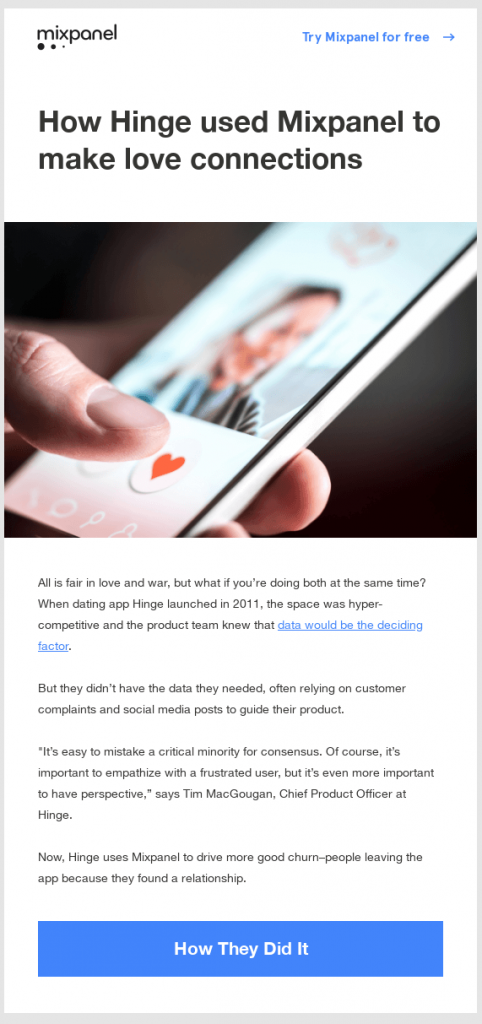
MixPanel is a SaaS tool for product analytics and tracking that takes advantage of its mail list to promote the content in its blog. This particular article was a case study featuring one of their customers that used MixPanel’s analytics to drive product development.
Strategy #2: Share your content on social media
Another valuable channel you can use to promote the articles and guides created by your content marketing team is social media.
Social media platforms hold tremendous power when it comes to their ability to reach the masses. Around 25% of the United States adults are on Twitter, while Facebook gets even more reach, with 70% of all American adults using it.
By taking advantage of your company’s social media marketing capacity and posting blog articles on your social media channels, you can tap into this massive reach potential and benefit from it.
Now let’s see what these posts look like in real life with a Tweet from HubSpot.

HubSpot, a popular all-in-one digital marketing platform, constantly shares its blog posts with followers on its social media pages. The post above is on Twitter promoting original research the HubSpot content team created about the main qualities of a great manager.
Strategy #3: Reach out to content curators
Content curators are individuals or organizations that constantly create lists of relevant content on specific topics and share them with their specific audience. They usually use traditional digital marketing channels such as social media, email, and SEO to distribute their curated lists.
To find these people or outlets, you can use two relatively simple approaches.
- Google search: you can search for the curators with keywords like “niche_name curators”. Alternatively, you can look for the curated lists and identify the author from there. For the second approach, you can use keywords such as “curated list of niche_name article”.
- Hashtag search: this approach will take us to social media sites. If you search for “#curated” plus the niche of your interest, you will stumble upon posts of relevant curators in your field.
If you’re wondering about the examples of content curators, here’s one for you.
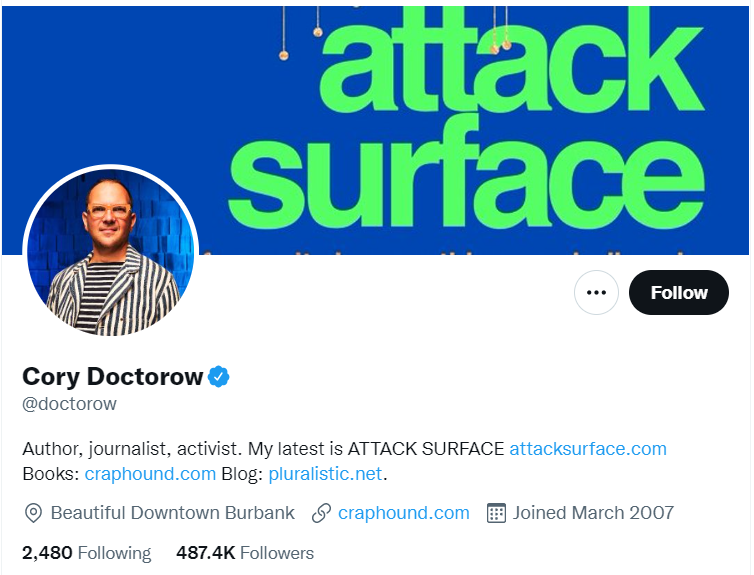
We have Cory Doctorow, who is a macro-influencer journalist and a professional curator specialized in technology. He runs the website pluralistic.net, a blog with sponsored content and curated links with news from the tech industry.
Strategy #4: Leverage paid advertising
Although this might sound a bit unusual, yes, you can consider setting some advertising budget aside for promoting your blog content.
This tactic sounds counterintuitive if you see your blog as a tool for bringing organic traffic to your site. However, blog posts and content marketing can reach other goals, too, such as increasing your reputation, generating brand awareness, getting conversions, or moving leads through the sales funnel. If you decide on adding these objectives to your blogging strategy, then, by all means, go for content promotion with paid ads.
To prove that big brands, in fact, use this method to promote their blog content, let us check out an example by SEMrush.

What we see here is a Google search result page for the keyword “how to do link building”. The first result is SEMush’s search ad that takes to their guide on link building.
SEMrush is a digital marketing tool many SEO experts use for link-building activities. The tactic of SEMrush here is to attract more readers to its blog and increase the trust and authority of its brand.
Strategy #5: Use content syndication
Content creation can sometimes be time- and resource-consuming. This is especially true when you have set a high bar and do not want to compromise on the quality of your content.
Therefore, many content marketing teams use a technique called content syndication to reach more new audiences while saving significant time on content creation and a big chunk of their content marketing budget.
Content syndication is the process of repurposing and republishing your content on several websites or social media channels at the same time. It does take your content team some time to do the repurposing, but it is much quicker and easier than making an article from scratch.
To understand content syndication better, let us look at this search result example.
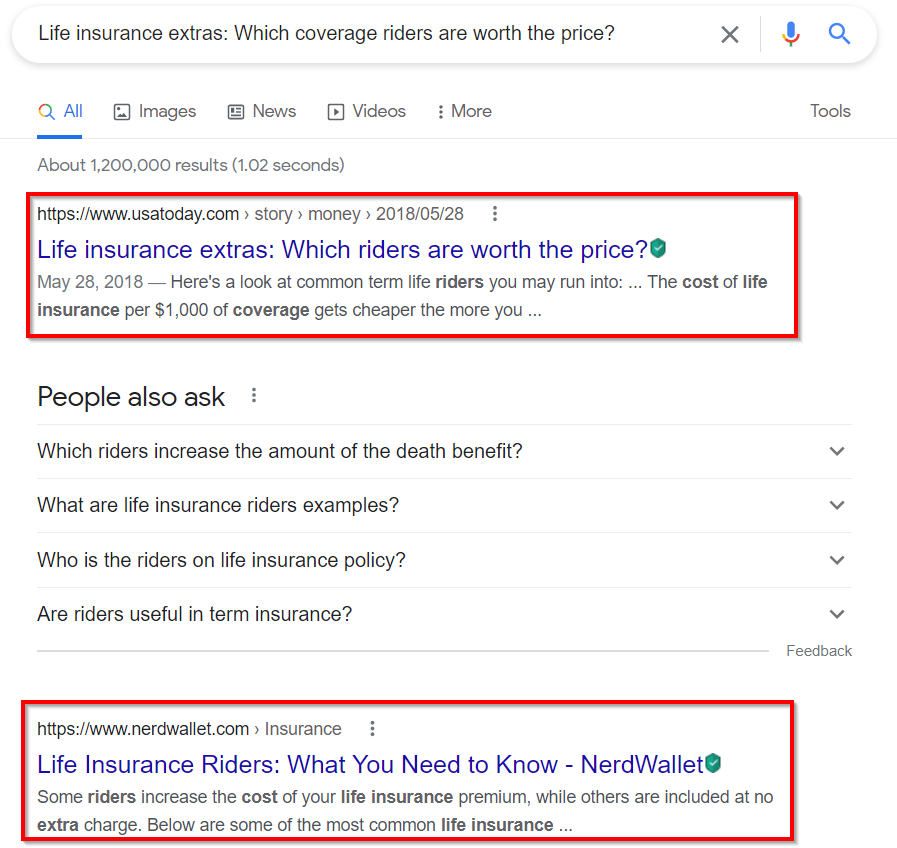
In the search engine result page above, we can see two articles with somewhat similar headlines that report on the same topic. Actually, these two are the same article. NerdWallet decided to do content syndication and republish this article on other sites, but under a slightly different title.
Strategy #6: Make your content shareable
Sometimes your content team will have a task to create content pieces with shareability in mind, which would require selecting a specific format, topic, and information this content will cover. The ultimate goal is to encourage others to share this piece on their website or social media accounts.
Two typical examples of shareable content are infographics and original research.
Infographics. If you create visual content like an infographic on a specific topic and work on including valuable data and compelling visuals in it, then other websites, blogs, and social media influencers will be more likely to share or mention it in their content. The reason why they will do it is simple – your infographic represents something truly unique, which they know their audience will appreciate.
Original research. In the case of original research, it is highly shareable thanks to the valuable content with insights, findings, and statistics it provides.
Sharing unique data in your research can prompt other outlets in your industry to write about it, so they will likely share your findings and link back to the original piece on your website.
Now, let us give you an example of shareable content with this infographic.
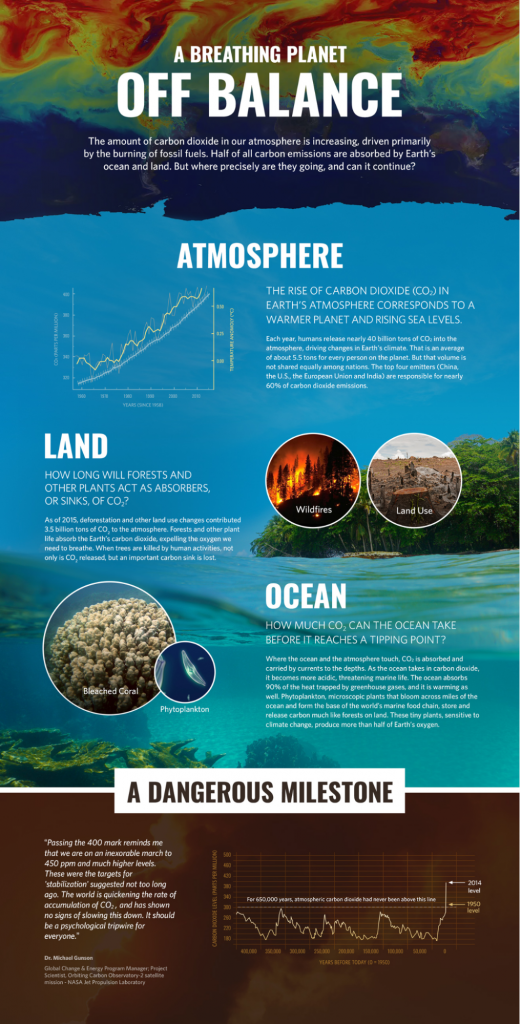
Here we have a combination of original research and an infographic by the National Aeronautics and Space Administration (NASA) that talks about the excess carbon dioxide on the planet.
The outlets that create content on the topic of climate change (e.g. Edawsoft’s article on this topic) can use this infographic as a source of valuable data and findings.
Strategy #7: Repurpose content
Although repurposing content might sound the same as syndication in reality, it is something completely different.
The main difference between these two is that when doing content repurposing, you are most probably changing the format of the content.
Some of the examples of such transformations are:
- Your original research can become an infographic.
- A guide that you had in written form will transfer to video content.
- The latest podcast episode can turn into a series of short articles and more.
To see a real case of repurposing evergreen content, take a look at the slide deck below.
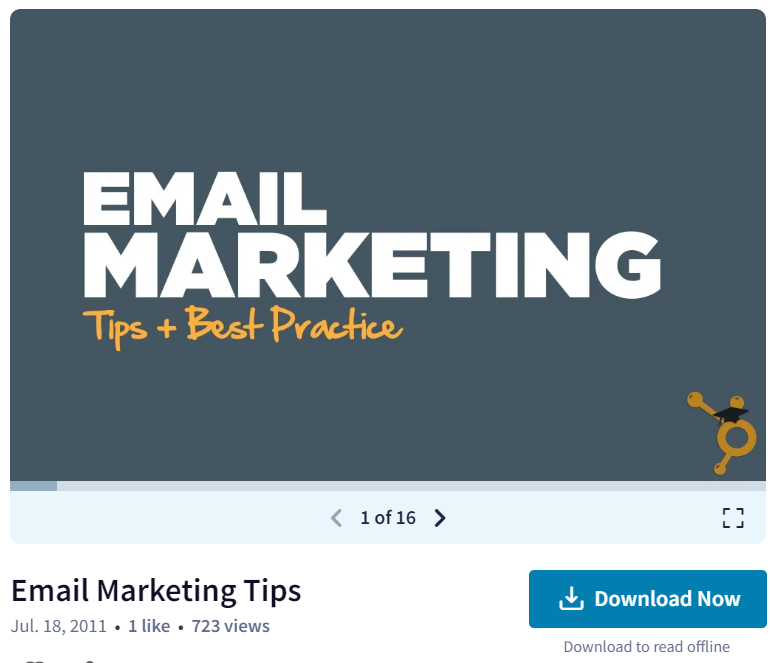
The slide deck in question belongs to the digital marketing platform Hubspot. In particular, it is repurposed content from the Hubspot Academy classes they have shared with the public.
Strategy #8: Contact influencers
Influencers hold tremendous power in terms of their ability to swing the consumers’ buying decisions. Around 40% of Twitter users have reported a purchase after seeing a recommendation by an influencer.
Marketers usually collaborate with influencers to create brand awareness or drive sales. But why not consider promoting your content with their help, too?
For instance, you can take advantage of the influencers who are considered experts in their niche (a.k.a. KOLs) – they can discuss your content, give their professional opinion, or recommend their audience to come and read your blog.
This is what this kind of collaboration with an influencer can look like.

The Tweet above belongs to Mary Poppendieck, a key opinion leader and influencer in software product management with 24k followers. She has shared and recommended an article by Silicon Valley Product Group, a website specializing in startups and product management.
Strategy #9: Try content communities
The final content strategy we want to discuss involves communities where people share and consume content. Typical examples of such communities are Habr, Medium, Mashable, and others.
One of the key advantages of using these communities is access to the right audience. If you post in a niche community, it opens doors to a very specific audience with interests and needs relevant to your business.
If we examine Medium, Habr, and other content communities, we can easily find content that belongs to various companies and websites that have shared it for promotional purposes. Here is a good example.
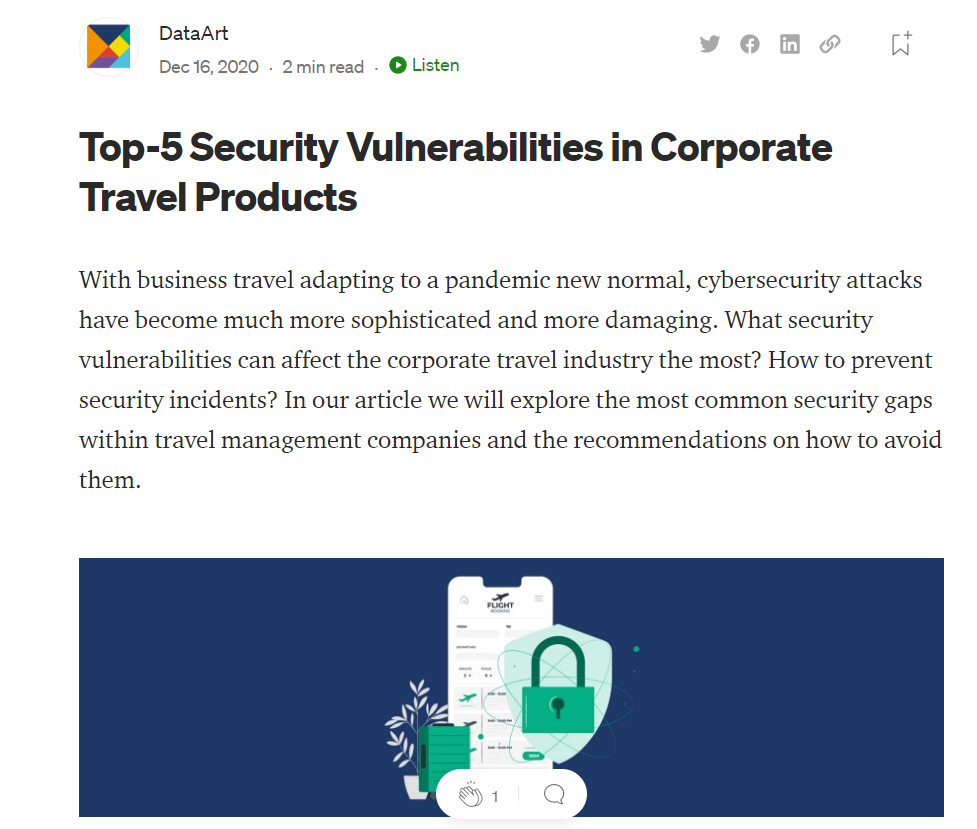
The authors of this article are software engineers from an IT company called DataArt, who discuss some of the issues they have found in travel products they tested.
We have reached the end of our list of strategies. These nine tactics above can be of great help to increase the effectiveness of your content promotion activities.
But we are not done yet. Up next, we will share a couple of creative tips for you to consider.
3 Creative Ideas to Promote Content
Content promotion is a discipline that loves and rewards creative tactics and hacks. To bring a unique touch to your promotional strategy, let us share some out-of-the-box ideas you’ll definitely appreciate.
Idea #1: Let your sources know you mentioned them
Giving credits to the original author when you are using their content is a highly ethical move. Apart from this, you can also notify them about you sharing their content to build relationships inside your niche and exchange content promotions in the future, too.
Idea #2: Leverage your existing network
The chances are high that you are currently friends with or collaborating with people that can help you reach your target audience. Therefore, do not hesitate to ask your network to share your content.
Idea #3: Strategically use your comments section
Leaving helpful comments to people’s questions is an important part of being a community member. Thus, consider leaving comments in the communities you use for content promotion. Although you cannot always place links to your content in your answers (some communities ban it as they seem spammy), you can always refer back to your content without them.
Next, let us talk a bit more about building an effective content promotion plan.
Top Tips for a Better Content Promotion Plan
With the creative tips behind us, we have prepared advanced content promotion tactics that can help you take your content promotion activities to a whole new level.
Tip #1: Find where your audience is
Although you can get some results by blindly using various distribution channels to promote your content, this is not the most effective and efficient way.
You can get a much better outcome by identifying the channels your target audience uses the most and focusing your promotion efforts on them only.
Tip #2: Learn what works best for each channel
Each channel has its specificities, pros, and cons. Therefore, it is crucial to understand what these specificities are and how to use them to your advantage.
For example, sharing long-form and complex videos on YouTube can work well, but you cannot do it on TikTok, as there are length limitations there.
Tip #3: Use more than one promotion tactic
You can never know right away which tactic will work the best for you. Thus, the best practice is to use different tactics, constantly monitor their performance, drop the underperforming ones, keep well-performing content, and add new techniques to test.
These were all the tips for this guide, but before finishing, let us also help you with the tools for content promotion.
3 Content Promotion Tools for Successful Campaigns
Doing content promotion is perfectly possible manually, especially if the amount of content is not that large and you are using only a few channels for that purpose.
However, you need to take into consideration that manual work usually takes more time and energy, and you will not be able to manage lots of content or channels on your own.
Therefore, you should consider adding specialized content promotion platforms to your marketing plan to automate some of your tasks and increase your effectiveness.
Here are three tools you can use.
Tool #1: BuzzSumo
We begin with BuzzSumo, a tool that positions itself as an all-in-one content marketing solution.
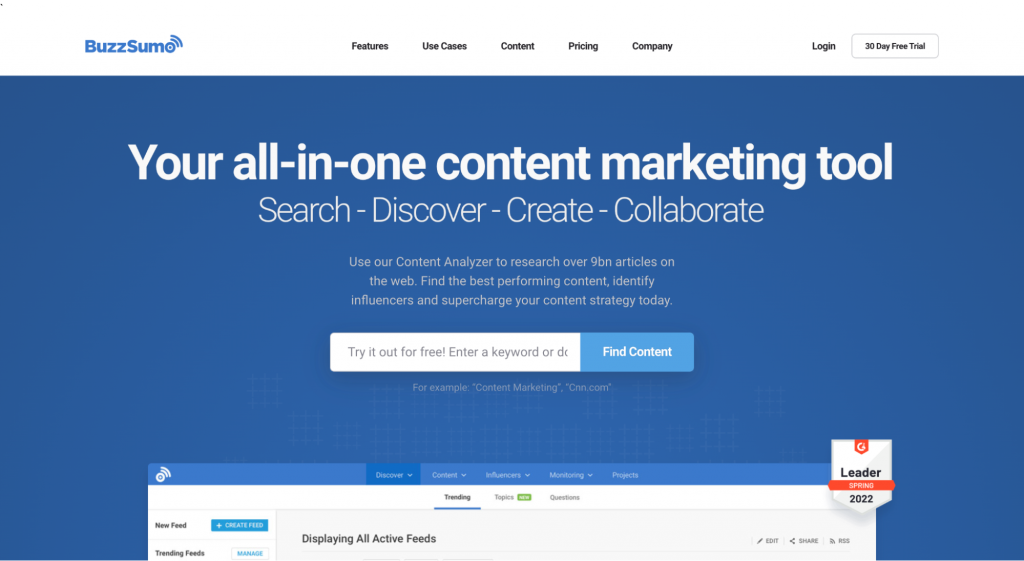
BuzzSumo is capable of handling most of the content marketing use cases with features such as:
- Content discovery: this feature lets you do keyword research to understand the relevance and audience interest in specific types of content. It also shows you the latest topic trends you can add to your content calendar.
- Influencer identification: the feature here helps you search for influencers based on various metrics.
- Monitoring: with the help of this one, you can monitor the internet for any posts and publications that mention you or your competitors.
For content promotion purposes, you can take advantage of the influencer feature in BuzzSumo and the monitoring tool, letting you find mentions of your content on the internet.
Tool #2: Hootsuite
The second tool we want to mention is Hootsuite, a social media promotion automation suite.
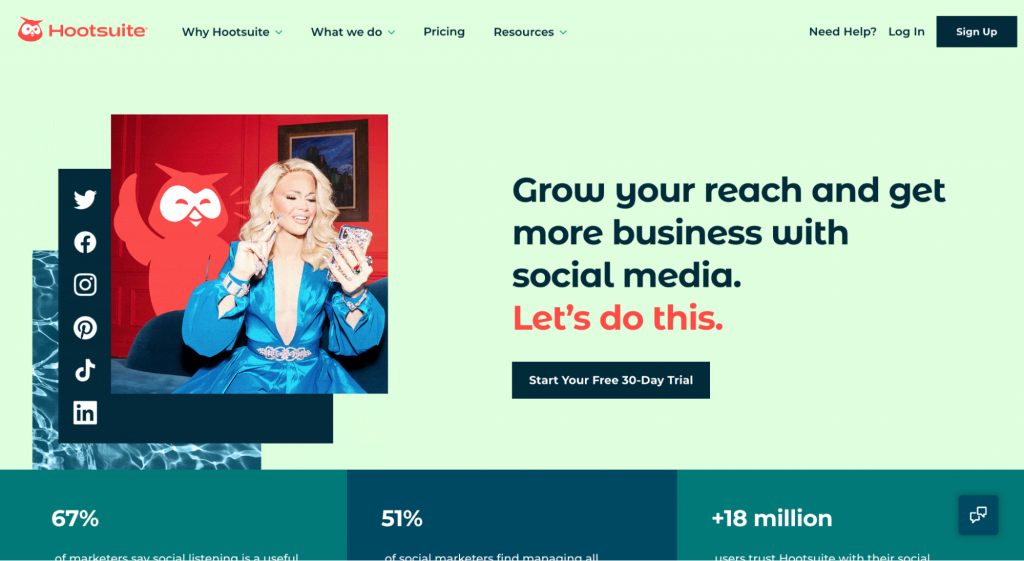
With Hootsuite, marketing teams can manage multiple social media channels at the same time thanks to features like:
- Unified publishing: letting you write a single post and publish it on multiple social media platforms simultaneously.
- Unified engagement: here, you can receive and answer all the messages from all your social media channels and messengers.
- Ads management: this one lets you promote your content via social media ads.
As a marketer who needs to do content promotion, you can use Hootsuite for syndication, influencer management, and paid content promotion.
We’ve written a guide on Hootsuite and its alternatives, make sure to check it out to learn more about how it can help you.
Tool #3: Outbrain
The final tool in our list is Outbrain which lets you manage native advertising.

Native advertising is slightly different from traditional as it appears as small sections in between the article or any other type of content.
Outbrain is a tool that can show your ads as banners inside articles. It also matches the product or service in your ad with the topic of the article to keep it relevant to the readers.
Outbrain can serve as a channel for running paid promotions of your articles.
Now Over to You
Your content can attract more traffic and readers than you think. By using content promotion strategies, you are able to increase the results that your new pieces of content generate, helping you reach your marketing goals faster.
We are fans of educational content about digital marketing and have lots of it on our blog, make sure to give it a read!

Sona Kalantaryan is a senior digital marketer with a creative past. Big fan of high cinema and well-optimized landing pages. She authors guides by sharing the best practices and does it the right way!
